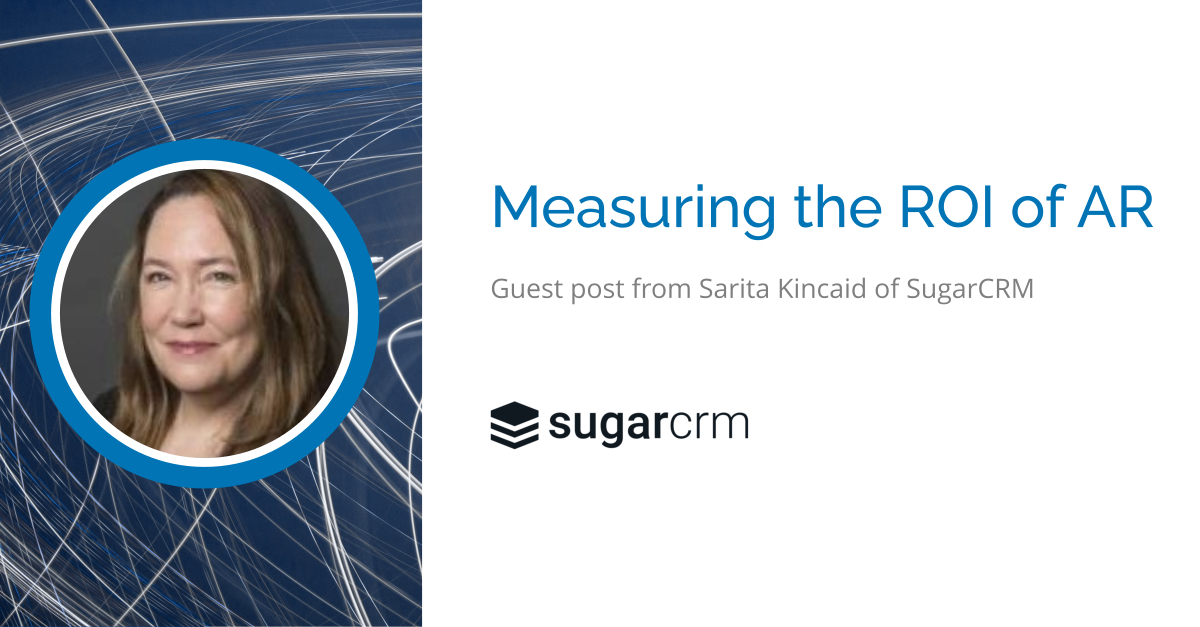Today, we’re bringing you a guest post from Sarita Kincaid, VP of corporate communications for SugarCRM. Recently named “Analyst Relations Professional of the Year” in the IIAR> Awards, Sarita is a frequent speaker at AR events and forums and is well-versed in AR best practices and trends. We’re thrilled to tap into her nearly two decades of AR experience and share her insights with you:
Analyst relations is finally having its “day in the sun” as the number of companies recognizing the strategic importance of AR is at an all-time high. No longer a subset of public relations programs, AR has moved away from counting metrics like the number of interactions or report placements as the primary (or only) measures of ROI. Today’s AR programs measure other metrics that are more business-driven and have an impact on the bottom line. Here are a few to consider:
Increased awareness and improved brand perception: Almost universally, strong AR programs net increasing amounts of coverage and positive brand mentions through research notes, blog posts, video-based reviews, social media mentions and other analyst-generated, public-facing materials. In addition to tracking coverage across a broad range of mediums and platforms, tonality must be measured.
Credibility/market validation: Similar to awareness and brand perception, an important benefit of an AR program is that it can increase a company’s credibility by providing validation from third-party market watchers (the analysts), as well as customers. This is particularly critical for start-ups, as analysts’ opinions carry a lot of weight with potential investors, prospects, partners and the media. To measure credibility and validation, AR can track analyst sentiment for interactions using a number of tools and services, and can also leverage customer feedback scores on analyst-affiliated review sites like Gartner Peer Insights.
Insights: Many industry analysts are experts in their fields and can offer an outside-in perspective on everything from product roadmaps to go-to-market messaging and positioning. Their feedback can help companies improve and accelerate product development cycles, target new customers and markets, identify and leverage trends, and create more effective marketing strategies. It’s increasingly important for AR professionals to have an easy system to track key, actionable insights; enable the business to follow up; and record the outcome: implemented, investigated but didn’t implement, etc.
Revenue impact: One of the most important, but often elusive, AR ROI metrics is AR’s impact on deals and revenue. Imagine sharing with company management that AR helped generate or contribute to revenue in the hundreds of thousands of dollars (or more!) instead of being a cost center. Revenue attributed to AR can be hard to track, but it’s not impossible. Some things to consider tracking:
- Pipeline from licensed analyst content about your company. By gating the content and/or using link tracking software, you can see which buyers are consuming analyst content.
- Gartner inquiry trend and search analytics capabilities: How often did your company’s name come up in client inquiries, and at what stage of the buying cycle? How often was your company searched for on Gartner’s website, and from what region, size of company and industry did the query originate?
- Insights from Forrester Inquiry Advantage database: This searchable database summarizes questions asked of analysts during vendor inquiries and guidance sessions with end-users. It’s useful for tracking customer interest in vendors/solutions.
- Direct “analyst involvement” data. For example: the sales team asks questions of prospects and customer wins, and enters the data into the CRM.
It’s also important to note that AR metrics are not one-size-fits-all… just like AR itself, which is a very strategic and versatile function of the organization. When defining your metrics and measures of AR ROI, you should consider how your AR program funnels into the unique business goals of your organization and explain to your executive team how AR feeds into the bigger picture. A good way to do so is to build an AR plan (for the quarter, year, etc.) and align that with the marketing or business plan. Then those tasks or goals can be measured by what was completed and how it affected the overall corporate strategy.
And once your AR program, likely in conjunction with executive leadership, has defined principal measures of AR ROI, it’s important to track them, of course — and demonstrate your worth. Especially when budgets are tight, being able to highlight great AR value can help make the case for maintaining or increasing AR investments. So, where can you record and get central visibility into the metrics that matter?
Capturing ROI results
It’s always best to select a tool that can be used for capturing and tracking as many AR program metrics as possible. In addition to being a great project management and information tool, a high-performing platform for AR professionals can capture research and social media hits, share of voice, and tonality data, such as credibility and awareness. It can also be easily tailored to record AR-related sales pipeline (revenue) and other custom metrics.
Because the ROI of an analyst relations program can have a significant impact on a company’s bottom line, it behooves AR pros to show that the impact is happening — and that it’s due to more than just vendor evaluations and raw number of analyst interactions. Tracking engagement and results from high-quality interactions —whether the results be around increasing brand awareness, influencing industry perceptions/credibility, identifying and leveraging industry trends, or linking your AR program to actual revenue — is key to proving the business value of AR.
Sarita Kincaid is VP of corporate communications for SugarCRM, managing the company’s corporate communications, as well as analyst and influencer relations programs. She previously held global AR positions at Oracle, Huawei and Cisco. Sarita is a frequent speaker at analyst relations events and has been recognized in the IIAR> Awards as Analyst Relations Professional of the Year for two years straight (2022 winner, 2021 runner-up). You can connect with Sarita on LinkedIn.



